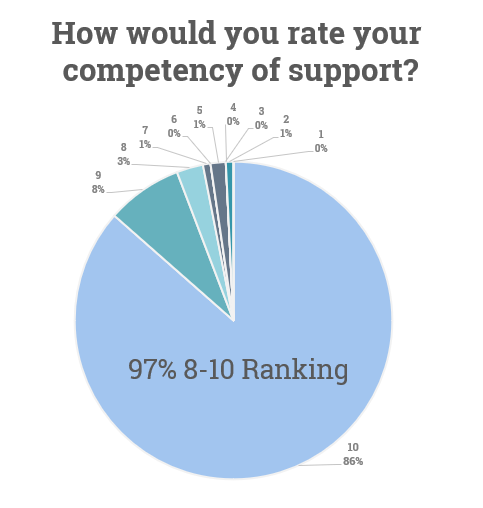While compiling research for a recent blog on legendary BOXX Technical Support (which I highly recommend) I became better educated on Net Promoter Score (NPS), the standard customer loyalty and satisfaction metric used to measure how likely customers are to recommend a product or service to others. Giving credit where it is due, most of my information came from an exceptional piece (which I also highly recommend) written by Adam Bunker for Qualtrics XM.
NPS was developed in 2003 by Bain and Company and according to Bunker (and everyone else), it is “the gold standard of customer experience metrics” employed “by millions of businesses to measure and track the overall customer experience.” In short, if your business has a high NPS, i.e., a high level of customer satisfaction and a positive customer journey, your customers are more likely to recommend your business. Makes sense.
As a business, how do arrive at your score? First, you survey your customers with one simple question: “How likely is it that you would recommend Organization X/Product Y/Service Z to a friend or colleague?”
On a scale of 1-10 with 0 being “not at all likely” and 10 being “extremely likely,” customers fall into one of three categories: detractors, passives, and promoters. Those who rate you 6 down to 0 are detractors—unhappy customers unlikely to buy from you again and who may also discourage others from buying from you. Respondents who rate you 7-8 are passives who are satisfied with your service, but not happy enough to be promoters. Lastly, those who rate you a 9-10 are promoters and are (obviously) loyal and enthusiastic customers.
Once you have the survey numbers, you calculate your NPS score by tallying the responses and subtracting the percentage of detractors from the percentage of promoters. For example, if 60% are promoters, 10% are detractors, and 30% are passives, your NPS would be 50. Showing my math: 60 - 10 = 50. The score can range from a dismal -100 up to a likely impossible 100.
Interpreting the Data
There are two primary methods to determine if you have a favorable or bad NPS score: absolute or relative. Relying on the absolute method, any score below 0 is a good indication your customers are more likely to warn friends and colleagues to stay away from your business.
With the relative method, you check out industry NPS benchmarks to understand how much of a brand differentiator your customer experience is. It varies by industry, but most companies have scores around 31 to 50. As for the computer hardware industry, here are the NPS scores of the tier 1, commodity PC manufacturers:
Lenovo: 16
Dell: 20
HPE: 23
Apple: 50

So what is BOXX Technologies” NPS? Well, we asked this question: “How likely are you to would recommend BOXX to a friend or colleague?” After six months of data and over 100 respondents, we scored an 87.
You read that correctly and it’s astronomical—unheard of, in fact. There’s not much more to add, except if you’re already a BOXXer, you’re likely not surprised by our score. If you have never owned or run your professional applications on a BOXX, it’s time to check out what you’ve been missing by chatting with us at www.boxx.com, or by calling 877.877.BOXX. We need to raise that 87.
